Getting the best audio from your gaming PC can be a tricky task. In this blog, we’re taking a look at how to connect speakers to your computer.
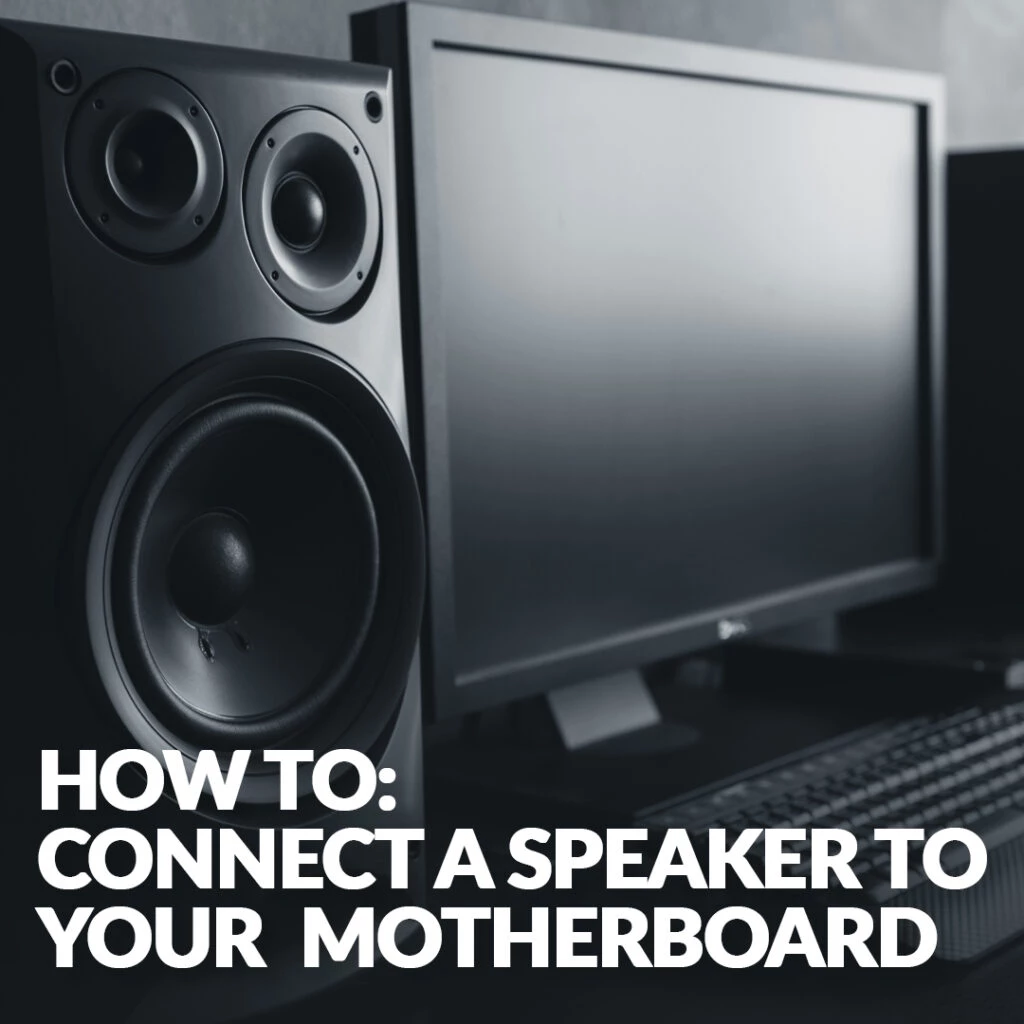
Bored with your headphones? Want to view content further away from your PC? Connecting speakers to your PC is a great way to listen to music, relax whilst you game, or even play together with friends. They can even provide post code beeps for fault finding! Whatever your reason to connect a speaker to your gaming PC, you’ll need to know how to do it.
3.5m? USB? Bluetooth?
With so many different types of connectors, you’ll need first to identify what connectivity your speakers have. This information by reading the products specs which can be found within the included booklet or the relevant manufacturer’s website. Alternatively, if you are relatively good with tech, just take a look at the connector.
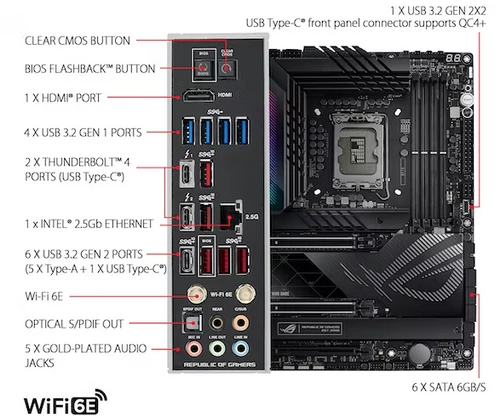
The above graphic shows some common connectors you’ll likely find on most modern motherboards. On some gaming laptops, you might find you have a headphone/microphone combo audio jack. These allow you to connect some gaming headsets with built-in microphones with just one cable. This combo type of 3.5mm audio connector will work the same way a traditional one would for connecting a speaker.
3.5mm & Front Panel Connectors
These connectors are found on almost all motherboards and often on the front of PC chassis. Sadly, not on phones any more, though 🙁
Most commonly on PC cases and laptops, these front panel connectors are split into the audio out and microphone in. For 2 or 2.1-channel speakers you can plug directly into the audio out.

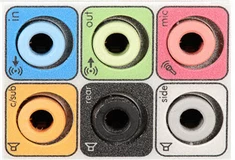
Your motherboard’s 3.5mm connectors, however, can be slightly confusing. As they have to support multiple different uses, such as multi-speaker surround sound, there are different configurations depending on what you connect. The table above should help explain all the different configurations.
Edifier Studio R1600T III 2.0 60W Speakers (Maple)
Perfect for listening to music whilst you game, or even for watching films, these Edifier Studio speakers come with a remote for easy operating and an incredible maple finish.

USB Speakers
USB is probably the second most common types of connection for PC speakers. Setup is relatively straight forward. In fact, all you need to do is plug the speakers USB cable into a spare USB port.

Razer Leviathan V2 Gaming 2.1 Bluetooth USB RGB Speaker Bar
With both USB and Bluetooth connectivity, this Razer speaker bar is ideal for gaming in comfort. What’s more, with built-in RGB and a subwoofer alongside THX Spatial Audio, you can experience your games like never before.
Bluetooth Speakers
Most modern gaming laptops will have Bluetooth, making connecting these speakers super easy. For desktop PCs, Bluetooth is not quite as common. However, there’s no need to panic, as connecting Bluetooth speakers to your PC is as simple as plugging in a USB adapter. Notably, if you need a stronger Bluetooth signal, you can alternatively use a PCIe Bluetooth adapter.
TP-Link Archer TXE75E Wi-Fi 6E BT 5.2 PCIe Adapter

- Unparalleled Tri-Band Speed2402 Mbps+2402 Mbps+574 Mbp
- BLE Technology – Bluetooth Low Energy technology for energy-saving wireless connectivity
- Broad Operation Range – Enjoy stable connection via your Bluetooth headset with a transmission distance of up to 20m in open space
TP-Link UB500 Bluetooth 5.0 Nano USB
Adapter

- Bluetooth 5.0 – Backward compatible with Bluetooth 4.0 devices
- Nano design – Small, unobtrusive design allows you to plug it in and forget it is even there
- Versatile Wireless Connectivity – Enable wireless communication with Bluetooth-enabled computers, printers, phones, headsets, speakers, keyboards and more
Windows Settings
Once you’ve physically connected your speakers to their correct connector, you’ll need to set them as your default device in Windows.
Windows 10
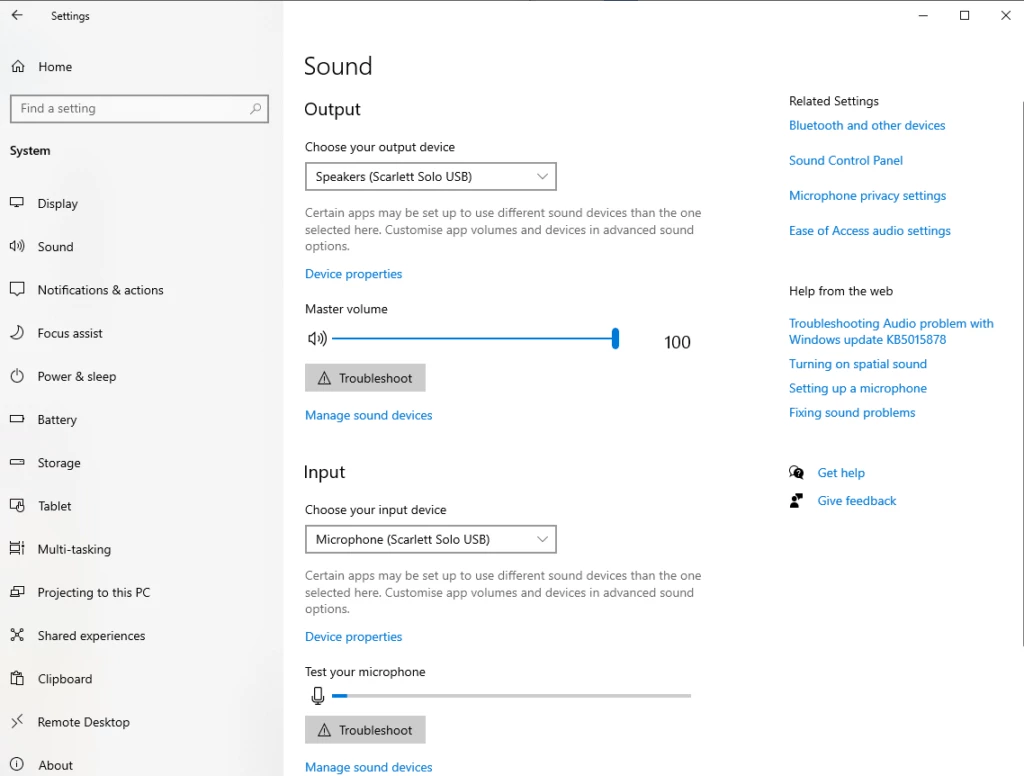
Windows 11
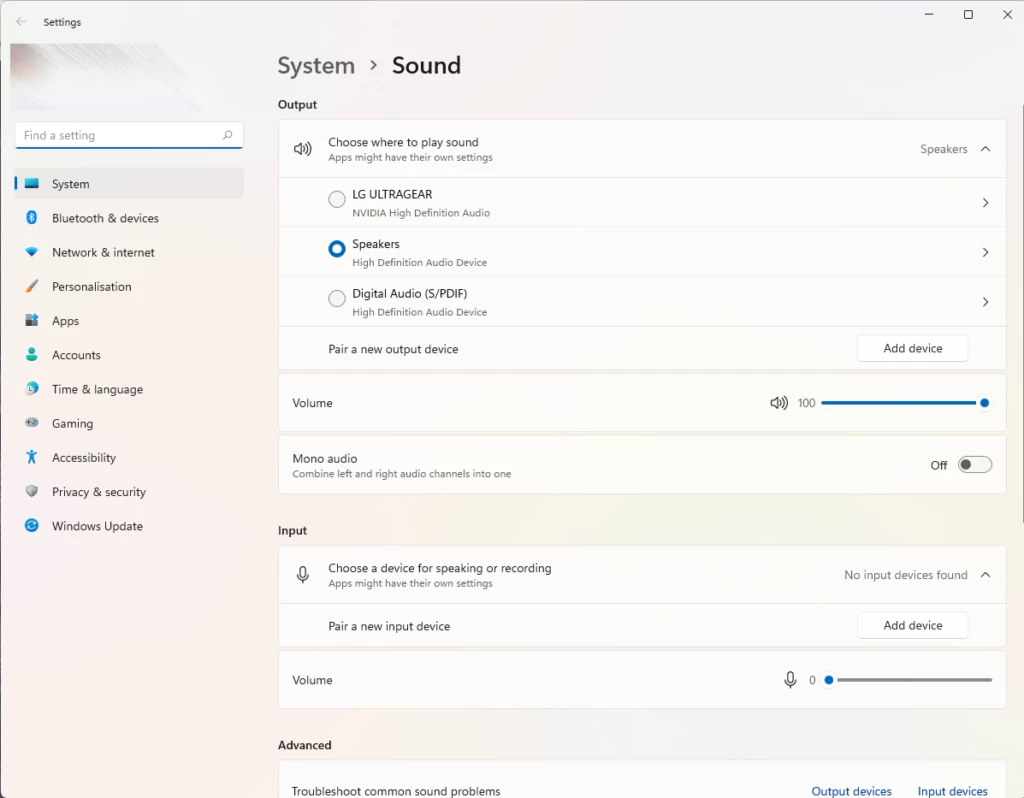
In both Windows 10 and 11, you can select your speakers in the sound panel. It’s worth noting, this is also where you choose your microphone.
Internal Motherboard Speakers & Connectors
If you’re building a new PC or transferring your hardware to a new PC chassis, you’ll need to connect a few cables from the PC case to the motherboard if you want your front panel connectors to work.
How do I connect the front panel audio header to the motherboard?
Without this cable, your front audio connectors will not work. Often marked HD Audio on the motherboard and cable, you simply need to align the cable with the pins and connect it.
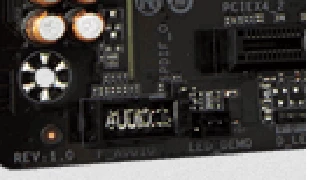
How do I Connect Internal Motherboard Post-Code Speakers?
Power-On-Self-Test codes are generated during the first couple of seconds of your PC powering on. They can provide all sorts of helpful information about problems with your PC and why it might not turn on. These speakers are easy to install and simply connect to the pins marked speaker or SPK, which are often close to the front panel connectors.
Need More Help With Your Gaming PC?
Check out more of the “How to” guides we have on the Overclockers UK blog!
Connected Yet?
Whilst we’re all here, do you need any cables? What audio setup do you use for gaming? Let us know down in the comments.



